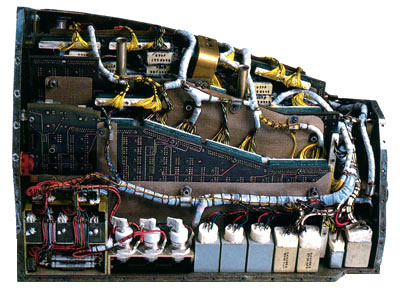
 |
Search | FAQ | US Titles | UK Titles | Memories | VaporWare | Digest | |||||||
| GuestBook | Classified | Chat | Products | Featured | Technical | Museum | ||||||||
| Downloads | Production | Fanfares | Music | Misc | Related | Contact | ||||||||
| CED in the History of Media Technology | ||||||||||||||

NASA used mainframe computers extensively with Project Mercury, but the capsule had no on-board general purpose computer. Space program engineers realized one would be needed for the complex maneuvering required for the eventual moon landing. So an on-board computer was contracted for Project Gemini - the bridge between Mercury and Project Apollo. IBM received a teletype proposing the computer on March 7, 1962 and work began on what one engineer described as "fitting a refrigerator inside a hatbox."
IBM delivered the 19-inch long, 58 pound computer in May 1963. It was contoured to fit inside the wall of the capsule and contained a 159,744 bit array of core memory about the size of a small loaf of bread. Core memory, in which tiny donut-shaped magnets store binary bits by being magnetized in one direction or the other, was chosen for its reliability and ability to continue storing data in the event of a complete power loss. The computer made its operational debut on March 23, 1965 with Gus Grissom and John Young on board. They were instructed to ignore the computer if it disagreed with prior test calculations, which it did, but mistakes in the test calculations resulted in a splashdown 60 miles off target. Had the computer been followed, splashdown would have been closer to target. This incident paralleled the experience with the election prediction by the Univac computer years earlier.